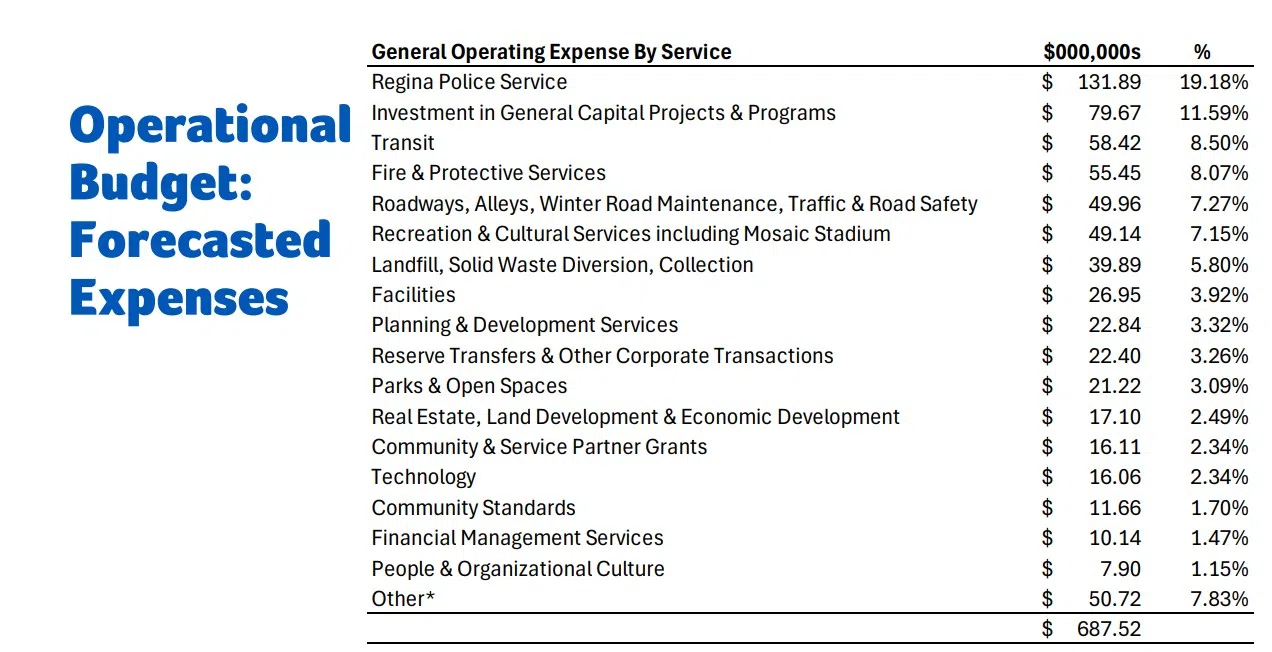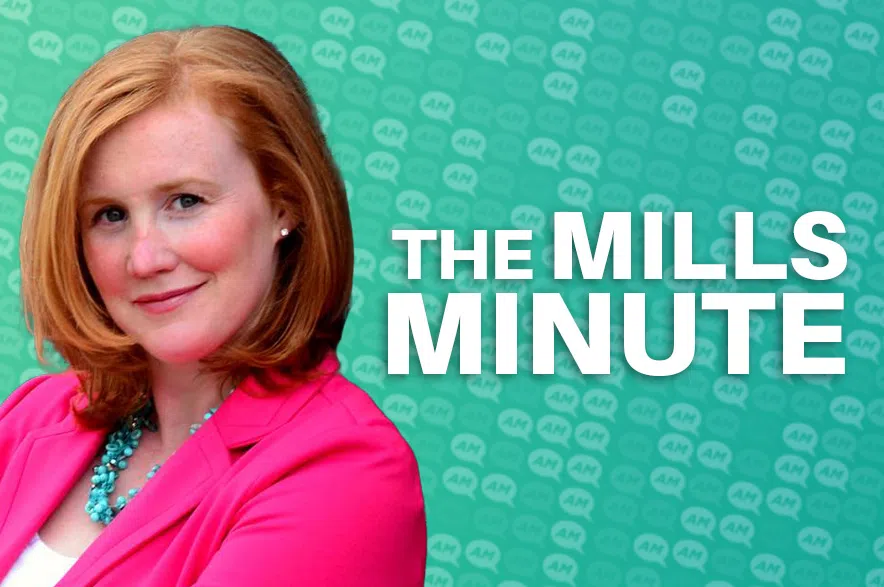Regina city council will face some difficult decisions during the 2026-27 budget deliberations.
Under a new process this year, city administration forecasted a 15.69 per cent mill rate increase in 2026.
Read more:
- Regina City Council adopts ‘person-centred’ framework to manage encampments
- Regina City Council to allow manufactured homes across city
- City of Regina’s new budget process aims to boost trust and transparency
That would mean an increase of $25 per month, or $300 per year for the average “low property value” household ($250,000), $33 per month, or $396 per year for the “average property value” household ($324,000), and $50 per month, or $600 per year for “high property value” homes ($500,000).
Budget talks are scheduled for Dec. 15 to Dec. 19.
City administration stressed that this budget forecast is not a formal request – it’s the amount of funding required to fund the growing cost of desired service levels.
Factoring in service enhancements, that number jumps up to 18.93 per cent, which is $40 per month, or $480 per year, for the average household.
Acting City Manager Jim Nicol said it would ultimately be up to council to decide where the money gets spent.
“We have administrative matters to decide, but we as administration are not the ones to evaluate whether you want six new parks in the city or four new accessible playgrounds versus 14 new buses or a fire hall,” he told media on Thursday.
“Those are inherently political… we’re here to say, this is how much it costs, this is how we would go about funding it should you choose to. And once you give us your package of money, then we will work to fit that in with your strategic plan and other things you have decided in the year.”
Nicol said city administration also has to manage the funding of previous council requests.
What are the big drivers of expenses?
The City of Regina is forecasting $687 million in operating expenses, but only $636 million in revenues – leaving a $51 million deficit. Administration says the forecasted a 15.69 mill rate increase would cover this.
The city projects $22.67 million on council-directed costs, $21.8 million on items like transit, major capital projects and service levels and $10 million expected for salaries and benefits.

A graph highlighting some of the main drivers of the projected funding increase. (City of Regina/screenshot)
“Our capital deficit is something that’s coming to roost, and probably the Indoor Aquatic Facility is a prime example,” said Chief Financial Officer Daren Anderson.
“When we have facilities like the Lawson coming to the end of life, there are some big decisions to be made. It’s one thing to handle the cost of inflation around salaries and equipment maintenance, etc., around services, but adding on that additional layer of all of the capital requests that are going to be coming to the city will be a daunting task for council, for sure.”
As for the city’s operating budget, Regina Police Service once again represents the highest forecasted expense at around $131.89 million in 2026. This accounts for a potential $7.2 million increase as well as a 2.2 per cent spike in the mill rate.
Potential areas to cut
Nicol said the forecasted budget also brings options for some reductions in order to ease the burden on the taxpayer. According administration’s report, council could ultimately choose to find between $5.02 to $22.35 in monthly savings for the average household. However, this could result in some “stark” decisions.
“Close a fire hall, stop transit, close neighbourhood community centres,” are what Nicol listed when asked to elaborate on what that would look like.
“We don’t do this lightly. We’re not taking any joy; we’re not making any professional recommendation to do that. We were tasked to say, ‘How would you find $68 million in a budget that is tight and when the public is expecting services and programs?”
– with files from 980 CJME’s Geoff Smith













